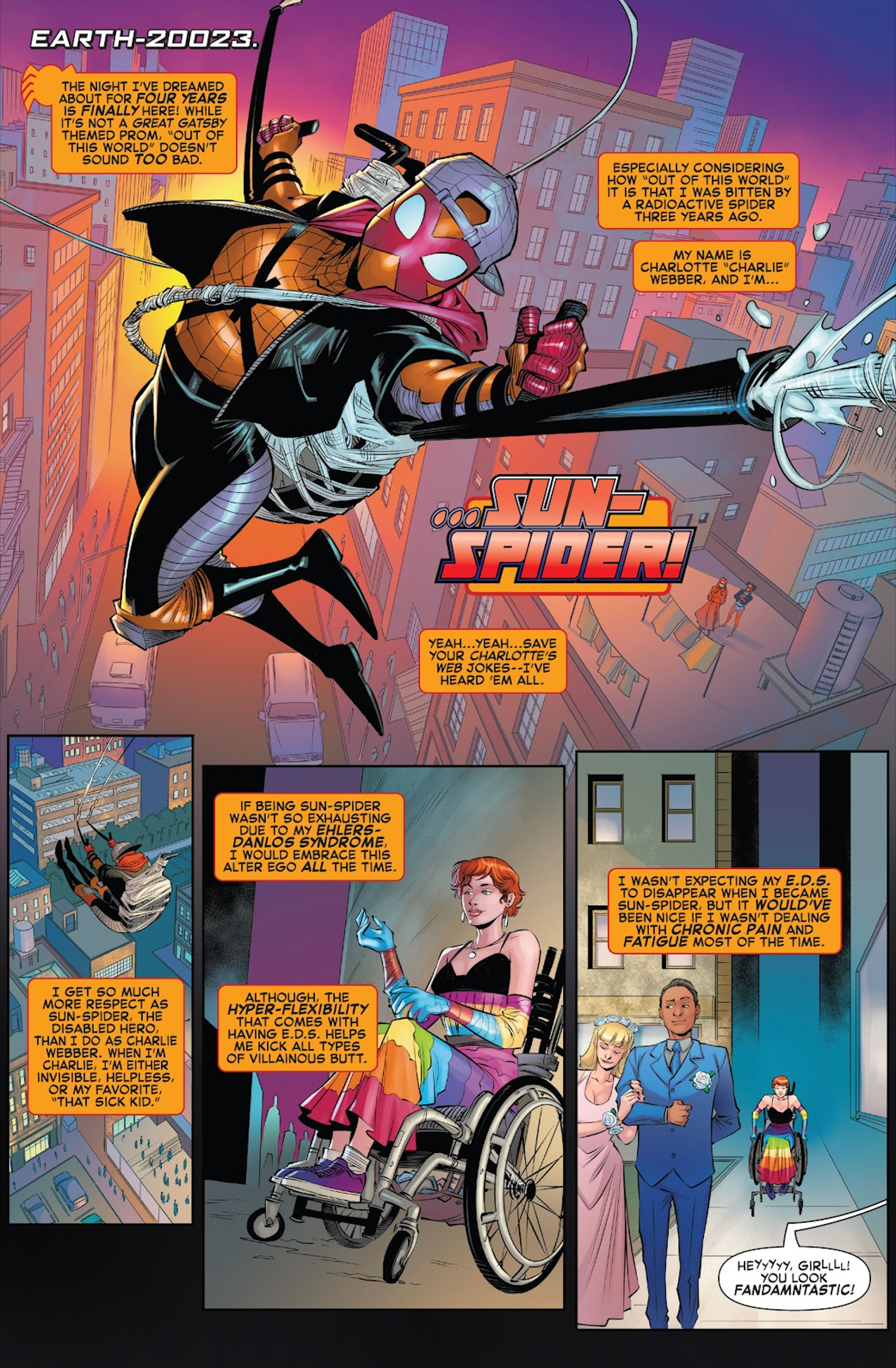Warning: SPOILERS for Edge of Spider-Verse #4Marvel’s latest Spider-Man variant shows the struggles of living with a very real disability, but she doesn’t let it get her down. The company’s Spider-Verse is stronger than ever, and writer Dan Slott’s new Edge of Spider-Verse series introduces even more variants into the Marvel canon. In Edge of Spider-Verse #4, the Sun-Spider fights for the people of New York while also fighting for greater accessibility standards for all.
Introduced in 2014, the Spider-Verse concept quickly gained a fan following. Readers greatly enjoyed the many Spider-Man variants working together to fight a singular evil. Part of the appeal was seeing the many well-known variants – Peter Parker, Gwen Stacy and Miles Morales – interact with the little-known iterations of the character, such as Spider-Man Noir, Spider-Pig and Spider-Man 2099. The concept’s success led to the 2018 Spider-Man: Into the Spider-Verse film from Sony, and two sequels, slated for 2023 and 2024, are well on their way.
In Edge of Spider-Verse #4’s story “Prom and Circumstance” written by Tee Franklin with art by Jethro Morales, Charlotte Webber swings through the city on her way to prom. Charlie has Ehlers-Danlos Syndrome, and while she has attended her school for some time, the administration still refuses to install a simple ramp. The resident Otto Octavius-Doctor Octopus variant crashes the party and a fire breaks out, but after Charlotte changes to Sun-Spider and defeats him, she is left alone – forgotten by staff and students – while the rest of the guests escape. “You left Charlotte all alone, knowing there’s no accessibility? And I’m the bad guy?” Octopus protests to the awaiting police. Though a villain he may be, Octavius has a point.

Ehlers-Danlos is not a comic book fabrication, but a real syndrome that affects over 200,000 people in the United States alone. Symptoms include overly-flexible joints, stretchy yet fragile skin, chronic pain, fatigue and mobility issues. If Sun-Spider didn’t have her spider-powers and her webshooters, she would have been trapped – but in her words, “It’s bad enough there was no ramp…but during a crisis, no one thought about me.” It’s an all-too common sentiment for those with mobility issues or other diseases; people who pretend not to notice eventually fail to notice for real.
At the end of the issue, Charlotte is approached by Madame Web along with Spider-UK; she’s called upon to save the Spider-Verse at the expense of dancing with her crush at prom (a classic Spider-Man dilemma). Charlotte must balance her life between student and superhero, all while living with Ehlers-Danlos syndrome. Out of all the Spider-Man versions seen in the series thus far, the fan-created variant Sun-Spider must contend with more difficulties than most – but despite her situation, she still chooses to save others as a superhero.




